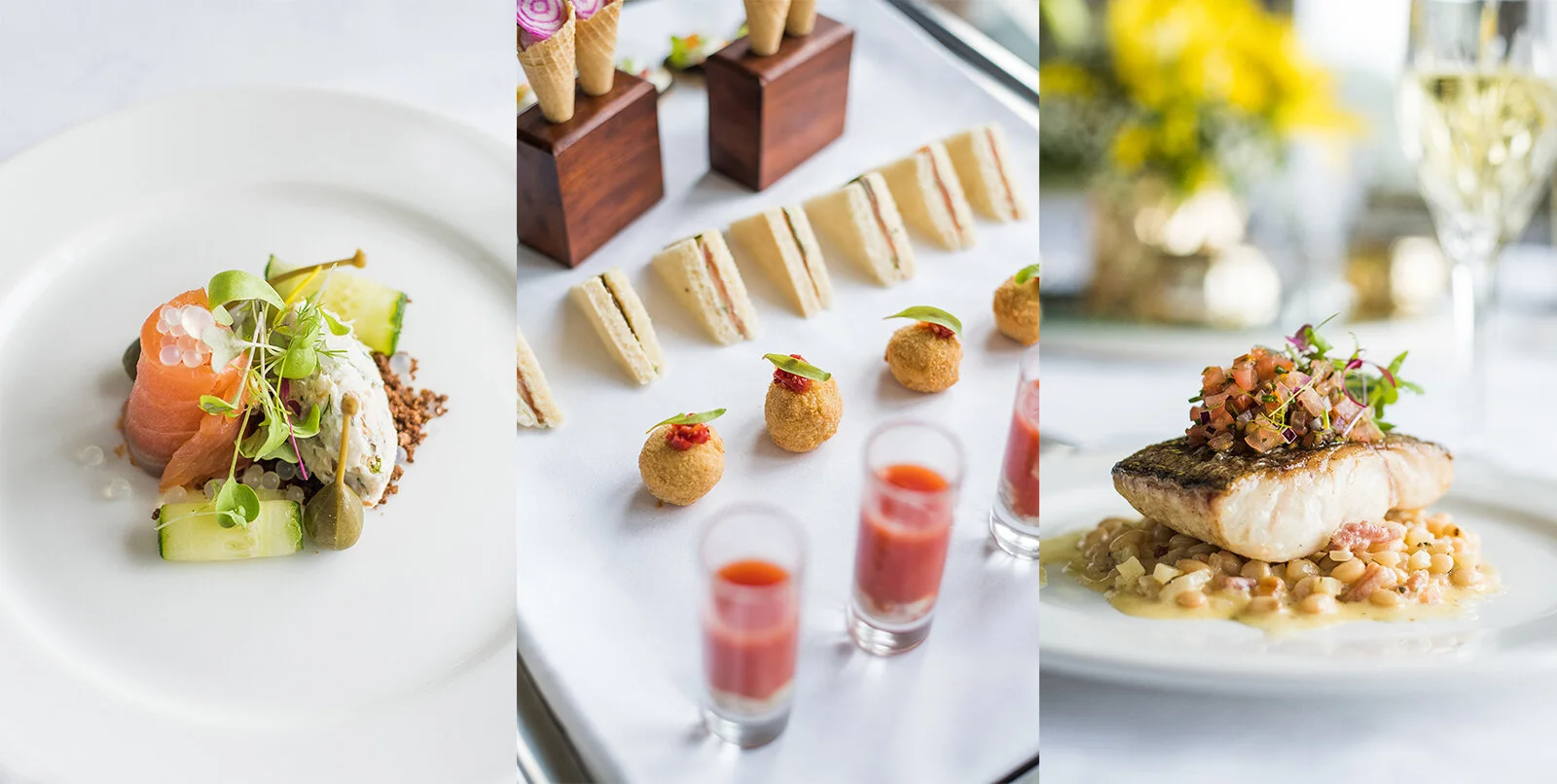Food Photography for Glenlo Abbey - photographing wedding menu in a luxury hotel in Galway + TIPS!
As we are entering into a gloomy and dull time of the year, I decided to bring a bit of colour with those fresh and bright food photographs created with the chef Dominique Majecki in the setting of an elegant, five-star Glenlo Abbey hotel.
This summer, I've been invited back to Glenlo Abbey Hotel to photograph the beautiful wedding menu created by the chef Dominique Majecki. Originally from France, Dominique brings a contemporary twist to classic French cuisine. I knew that the presentation of food will be of the highest standard. Our aim was for the photographs to be bright and colourful as they were meant to be used in the wedding brochure, website and social media.
We decided to use white plates and white tablecloth, but to liven up the set with candles and flowers. This way, the photos will look like from the actual wedding and will give the idea of the whole dining experience.We set up a table next to the window to get the best out of the available light. If I can, I will always find a spot with natural light. I developed my own food photography style combining the day-light and diffused artificial lighting. I set up a white parabolic 120 cm umbrella with Godox V860ii light to soften the shadows and bring out the textures of Dominique's tasty food. I shoot with Nikon D850 + Nikon 50mm 1,4 as well as Godox X1T wireless transmitter to trigger the lamp. Combining soft light and this lens, I achieved natural, soft feel to the photographs with the emphasis on the colour and textures of food.
When the first dish arrives from the kitchen, I look at it closely. I examine all the elements, recognize the 'hero' of the plate and think of how I will photograph it, what angles should I use and if the shallow depth of field can be an advantage. Then I choose the elements that will create the feeling around the food: I look for the cutlery - is it a starter or a main? Should I have white or red wine in the background? Finally, the last look at the settings - I will usually start with F2,8 for a starter and F3,5 with a bigger plate. ISO set up for 400 and from that moment on, it's just me and the food.
There are usually three main angles I consider when photographing food:
1. Overhead
Shooting overhead is great for flat food with a lot of detail, but no height, as well as a table setting with lots of elements in focus. Not so good to create depth of field.
2. 45 degrees
This imitates the angle from which you view food seated at the table. Great for drawing the viewer into the image and creating depth.
3. Eye-level
Great for showing off the height of a dish or layers.
Here is the gallery with selected photographs of the dishes from this photoshoot. Warning: you might get hungry looking at them!



















